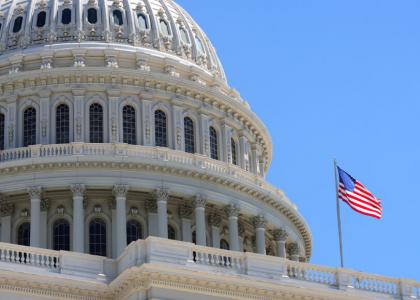Proposals Could Cut Greenhouse Gasses by Amount Equal to Nine Months of U.S. Emissions
Washington, DC—A package of proposed energy-saving investments in the nation’s buildings, transportation, and industrial sector would boost jobs by about 400,000 for several years and cut greenhouse gas emissions by an amount equal to nine months of all current U.S. emissions, a new analysis released today finds. The study by the American Council for an Energy-Efficient Economy (ACEEE) models the impacts of 10 sets of proposals, several touted by the Biden administration or congressional leaders, that a major infrastructure or other funding bill could include this year.
Among the measures analyzed are funds for efficiency upgrades to affordable homes, tax breaks to encourage purchases of efficient electric vehicles and heat pumps, and programs to transform industrial energy use. Together, over the lifetime of the investments and their impacts, the 10 proposals would:
- Create 3.9 million jobs over time (measured in job-years), with about 400,000 jobs added for several years this decade.
- Reduce carbon dioxide emissions by 3.7 billion tons
- Save households and businesses $300 billion on energy bills
“These energy-saving investments create jobs now, reduce energy costs for years to come, and protect our climate,” said Steven Nadel, executive director of ACEEE. “The decisions our leaders make now are going to affect a whole generation of buildings, vehicles, and industrial plants. We have an opportunity to make transformative investments in our future, and we should seize it.”
The most transformational long-term market impacts of the policies examined would come from support for transformative industrial technologies, large-scale commercialization of efficient electric heat pumps for space and water heating, and new zero-energy homes and commercial buildings. Efficiency improvements in low-income homes, including in affordable rental housing, would reduce energy costs for those who need it most while improving the comfort and safety of residences.
The ACEEE analysis focused on 10 proposals for federal energy efficiency investments—some introduced in Congress and some with multiple components—that could be included in major infrastructure legislation. The projections are based on likely scenarios for implementation compared to a baseline scenario without the funding, not on maximum potential impacts. The jobs are net added employment after paying for the investments, and the carbon reduction is based on projected average carbon intensity of electricity. The analysis includes a breakdown of the jobs created, carbon dioxide emissions avoided, and net economic savings from each set of proposals evaluated, including the potential impacts of larger and smaller investment levels.



